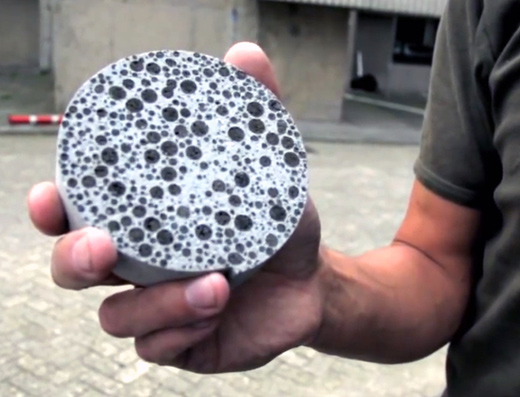New “Bio Concrete” Developed With Self Healing Properties
With concrete being the most used material for buildings for tens of years we have been trying to make it more durable however under most conditions it eventually cracks and wears away over time however one professor believes he may have found a solution.
“We have invented bioconcrete i.e. concrete that heals itself using bacteria,” says Henk M Jonkers, professor in the Delf University of Technology, Netherlands.
Jonkers and Erik Schlangen have together developed the research project of bacteria-based self healing concrete, in the Delf.
The research started with the observation that concrete structures usually show some self-healing capacity, i.e. the ability to seal or heal freshly formed micro-cracks due to the presence of non-hydrated excess cement particles in the material matrix, which undergo delayed or secondary hydration upon reaction with water ingress. Buthey subsequently developed a new type of bacteria developed self-healing concrete.
Cracks are an inevitable problem with the concrete no matter how a structure is built. “The problem with cracks in concrete is leakage,” said Jonkers, “If you have cracks, water comes through.” If water gets in contact with steel reinforcements found in all RCC structures, the steel may corrode and the structure can weaker or even collapse.
Bacillus bacteria, which can endure harsh environments thrives in alkaline conditions without oxygen or food for years by forming spores which lie in wait. If a food source such as calcium lactate is embedded with the bacteria, set in into capsules made from biodegradable plastic added to the concrete mixture, this creates bioconcrete. When cracks are created and water having ingresses, the bacteria germinates by feeding on the calcium lactate, multiplying and ultimately forming limestone or lactite closing or sealing the crack.
The Delf Professor said “It is combining nature with construction materials. Nature is supplying us a lot of functionality for free, in this case, limestone-producing bacteria”, adding “If we can implement it in materials, we can really benefit from it, so I think it is a really nice example of tying nature and the built environments together in one new concept.”
The research paper of the two from Delph University discussed an acceptable reduction of about ten percent in the compression strength of the structure as a result of adding the organic components. But the decrease is compensated by the substantial increase in the healing capacity of the structure.






